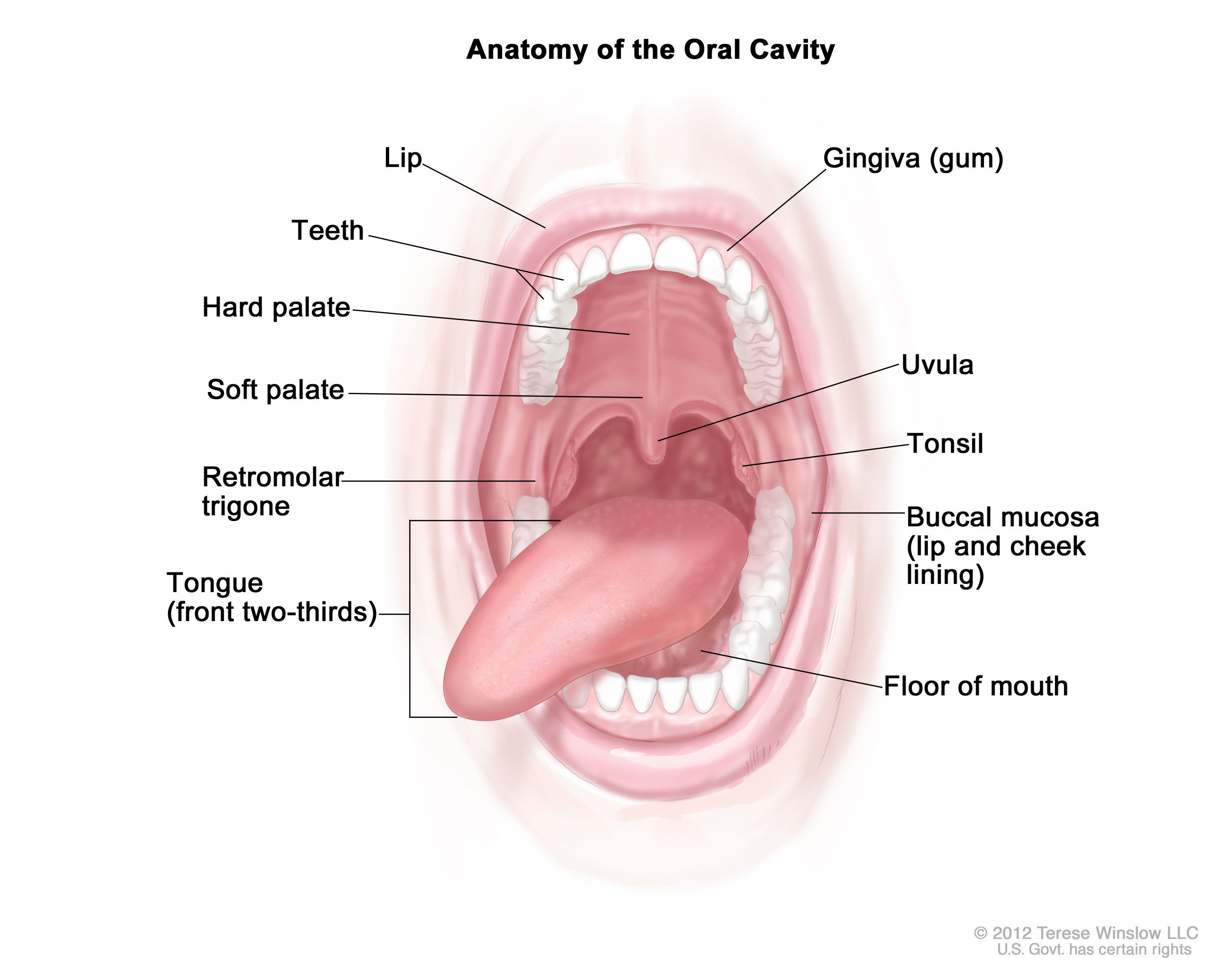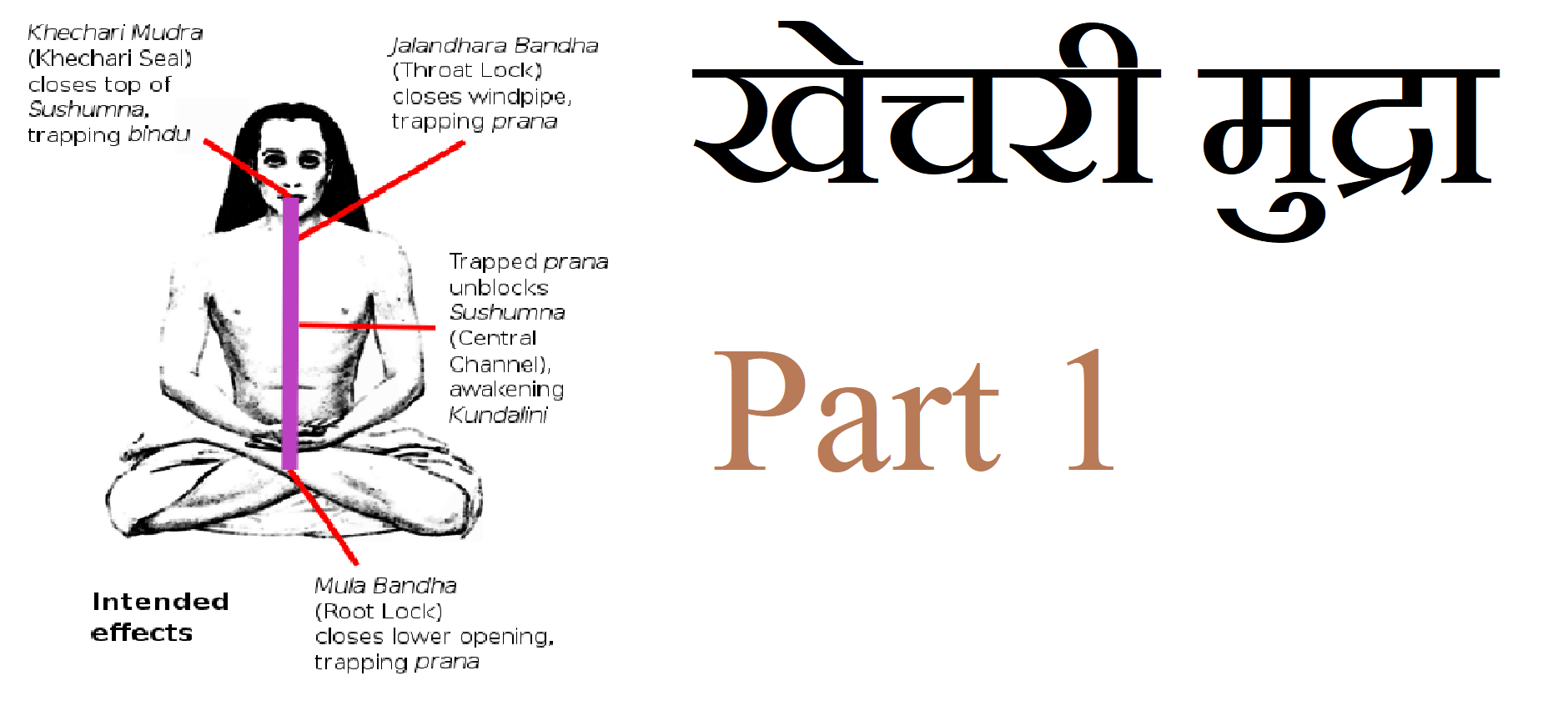Khechari mudra is one of the toughest techniques. It is believed to give supernatural powers to Yogis. The organ it is practiced with is the tongue.
There is no asana like the Siddhasana and no Kumbhaka like the Kevala. There is no Mudra like the Khecari and no Laya like the Nada.
– Hatha Yoga Pradipika, ch. 1, v. 45
Khecarī mudrā (commonly written as Khechari mudra) involves pushing the tip of the tongue back towards the soft palate, all the way into the nasal cavity. It is done to seal the energy of Bindu [1].
Etymology
Khecarī (in Sanskrit, खेचरी) is a combination of two root words – kha (means “space or brahman”) and char (means “walking or moving”). The word mudrā (in Sanskrit, मुद्रा) means a “seal” / “gesture” / “pose”. Mudras are part of a ritual or sometimes can just be symbolic. These are techniques for locking the breath within the body. Another term associated is bandha, means “to bind” / “fix” / “restrain”. Thus, Khecarī mudrā is also called Khechari seal or Khechari bandha.
Hence, Khechari mudra is the tongue lock that makes one roam through infinite space, flying freely. The Siddhas have named this mudra Khecari from the fact that the mind and the tongue reach Akasa (ether) by its practice [2].
Description
Let’s understand the tongue first. Our tongue is made up of a group of eight different muscles. It is very strong and flexible, especially the front part. We use its movability for speaking and chewing food. The upper surface of the tongue is called the back of the tongue. It has sensory cells for touch and taste sensations. The tip & the side are quite movable and can perform complex movements. While the root of the tongue cannot move freely and is connected to the floor of the mouth. It is also called the base of the tongue and cannot be seen from outside the mouth.

Khechari mudra is a technique of swallowing the tongue. It is accomplished by thrusting the tongue into the gullet, turning it over itself, while keeping the eyesight in the middle of the eyebrows. Turning the tongue upwards, it is fixed on the three ways (palate, windpipe and esophagus). This makes the Khecari mudra, performed in the supportless space between the Chandra and the Sûrya (the Pingalâ & Idâ respectively) and called the Vyoma (sky) chakra. From that Chandra is shed the essence which, leaving the body, causes death in men. It should, therefore, be stopped from shedding. Khechari mudra is a very good instrument for this purpose [2].

Benefits
By practicing Khechari mudra,
- a Yogi is saved from poisons, diseases, death, old age, etc. He who knows the Khechari mudra is not afflicted with disease, sloth, sleep, death, hunger, swooning and thirst. He who knows Khechari mudra is not troubled by diseases, is not stained with karmas, and is not snared by time [3].
- there is neither fainting, nor hunger, nor thirst, nor laziness. There comes neither disease, nor decay, nor death. The body becomes divine [3].
- drink the ambrosia daily. One obtains Vigraha siddhi (power over the microcosm), even as lion over the elephant of death. This mudra is the source of all success [5].
- body cannot be burned by fire, nor dried up by air, nor wetted by water, nor bitten by snakes. The body becomes beautiful. Samadhi is verily attained, and the tongue touching the holes in the roof (of the mouth) obtains various juices (it drinks nectar) [4].
- crosses the great ocean of sins, and having enjoyed the pleasures of Deva-world is born into a noble family. He who practices this (Khechari mudra) calmly and without laziness counts as seconds the periods of a hundred Brahmas [5].
Now, let’s learn about the techniques and precautions in the subsequent article.
References
- Bindu (in Sanskrit, बिन्दु) denoting a “point” / “drop” / “dot”. In Hindu metaphysics it is considered as a point where the creation begins and may also be considered as the point of unity.
- Book : Hatha Yoga – The report of a personal experience, by Theos Bernard
- Book : Hatha Yoga Pradipika, written by Swami Swatmarama & translated by Pancham Sinh
- Book : Gheranda Samhita – A treatise on Hatha Yoga, translated by Sris Chandra Vasu
- Book : The Siva Samhita, translated by Rai Bahadur Srisa Chandra Vidyarnava

4 thoughts on “Khecarī mudrā – Meaning, Description and Benefits”